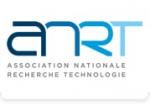Comprendre l’origine de la remarquable efficacité de formation des galaxies lointaines // Understanding the origin of the remarkable efficiency of distant galaxy formation
| ABG-134078 | Thesis topic | |
| 2025-10-29 | Public/private mixed funding |
CEA Laboratoire de Cosmologie et d’Evolution des Galaxies
Saclay
Comprendre l’origine de la remarquable efficacité de formation des galaxies lointaines // Understanding the origin of the remarkable efficiency of distant galaxy formation
- Earth, universe, space sciences
- Physics
Astrophysique / Physique corpusculaire et cosmos
Topic description
Le télescope spatial James Webb révolutionne notre compréhension de l’univers lointain. Un résultat s’impose qui questionne nos modèles : la très grande efficacité de formation d’étoiles des galaxies lointaines. Mais ce constat est dérivé de manière indirecte : on mesure la masse d’étoiles dans les galaxies, pas leur taux de formation d’étoiles. C’est la principale faiblesse du James Webb. Le but de cette thèse est de remédier à cette faiblesse du James Webb en utilisant sa capacité de résolution angulaire, qui n’a jusqu’ici pas été prise en compte afin d’obtenir une mesure plus robuste du SFR des galaxies distantes. On en déduira une loi qui permettra d’améliorer la robustesse de la détermination du SFR grâce aux propriétés morphologiques et en combinant les données du James Webb avec celles d’ALMA (z=1-3). Puis on l’appliquera à l’univers lointain (z=3-6, 2e partie) et on l’utilisera comme benchmark pour les simulations numériques (3e partie).
------------------------------------------------------------------------------------------------------------------------------------------------------------------------
------------------------------------------------------------------------------------------------------------------------------------------------------------------------
The James Webb Space Telescope is revolutionizing our understanding of the distant universe. A result has emerged that challenges our models: the extremely high efficiency of star formation in distant galaxies. However, this finding is derived indirectly: we measure the mass of stars in galaxies, not their star formation rate. This is the main weakness of the James Webb. The aim of this thesis is to remedy this weakness by using its angular resolution capacity, which has not been taken into account until now, in order to obtain a more robust measurement of the SFR of distant galaxies. We will deduce a law that will improve the robustness of SFR determination using morphological properties and combining data from the James Webb Space Telescope with data from ALMA (z=1-3). We will then apply it to the distant universe (z=3-6, part 2) and use it as a benchmark for numerical simulations (part 3).
------------------------------------------------------------------------------------------------------------------------------------------------------------------------
------------------------------------------------------------------------------------------------------------------------------------------------------------------------
Pôle fr : Direction de la Recherche Fondamentale
Département : Institut de recherche sur les lois fondamentales de l’univers
Service : Direction d’Astrophysique
Laboratoire : Laboratoire de Cosmologie et d’Evolution des Galaxies
Date de début souhaitée : 01-10-2026
Directeur de thèse : ELBAZ David
Organisme : CEA
Laboratoire : DRF/IRFU/DAP/LCEG
------------------------------------------------------------------------------------------------------------------------------------------------------------------------
------------------------------------------------------------------------------------------------------------------------------------------------------------------------
The James Webb Space Telescope is revolutionizing our understanding of the distant universe. A result has emerged that challenges our models: the extremely high efficiency of star formation in distant galaxies. However, this finding is derived indirectly: we measure the mass of stars in galaxies, not their star formation rate. This is the main weakness of the James Webb. The aim of this thesis is to remedy this weakness by using its angular resolution capacity, which has not been taken into account until now, in order to obtain a more robust measurement of the SFR of distant galaxies. We will deduce a law that will improve the robustness of SFR determination using morphological properties and combining data from the James Webb Space Telescope with data from ALMA (z=1-3). We will then apply it to the distant universe (z=3-6, part 2) and use it as a benchmark for numerical simulations (part 3).
------------------------------------------------------------------------------------------------------------------------------------------------------------------------
------------------------------------------------------------------------------------------------------------------------------------------------------------------------
Pôle fr : Direction de la Recherche Fondamentale
Département : Institut de recherche sur les lois fondamentales de l’univers
Service : Direction d’Astrophysique
Laboratoire : Laboratoire de Cosmologie et d’Evolution des Galaxies
Date de début souhaitée : 01-10-2026
Directeur de thèse : ELBAZ David
Organisme : CEA
Laboratoire : DRF/IRFU/DAP/LCEG
Funding category
Public/private mixed funding
Funding further details
Presentation of host institution and host laboratory
CEA Laboratoire de Cosmologie et d’Evolution des Galaxies
Pôle fr : Direction de la Recherche Fondamentale
Département : Institut de recherche sur les lois fondamentales de l’univers
Service : Direction d’Astrophysique
Candidate's profile
Apply
Close
Vous avez déjà un compte ?
Nouvel utilisateur ?
More information about ABG?
Get ABG’s monthly newsletters including news, job offers, grants & fellowships and a selection of relevant events…
Discover our members
 PhDOOC
PhDOOC  Aérocentre, Pôle d'excellence régional
Aérocentre, Pôle d'excellence régional  Groupe AFNOR - Association française de normalisation
Groupe AFNOR - Association française de normalisation  Institut Sup'biotech de Paris
Institut Sup'biotech de Paris  ANRT
ANRT  CASDEN
CASDEN  Ifremer
Ifremer  Généthon
Généthon  TotalEnergies
TotalEnergies  ADEME
ADEME  Nokia Bell Labs France
Nokia Bell Labs France  CESI
CESI  MabDesign
MabDesign  Tecknowmetrix
Tecknowmetrix  MabDesign
MabDesign  ONERA - The French Aerospace Lab
ONERA - The French Aerospace Lab  Laboratoire National de Métrologie et d'Essais - LNE
Laboratoire National de Métrologie et d'Essais - LNE  Servier
Servier  SUEZ
SUEZ  ASNR - Autorité de sûreté nucléaire et de radioprotection - Siège
ASNR - Autorité de sûreté nucléaire et de radioprotection - Siège



